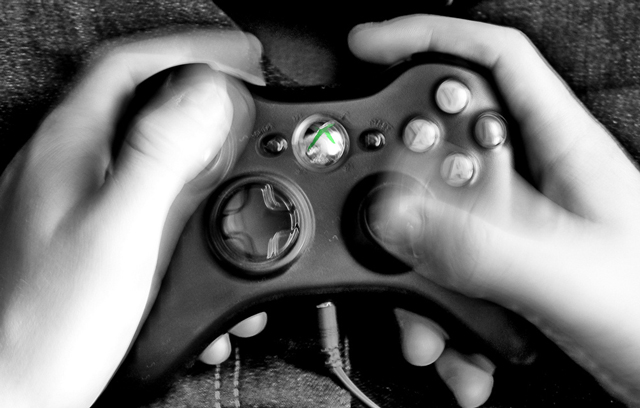
Signs of the traditional gaming industry’s decline are everywhere. They’re in the financial results of the giants of games publishing such as Electronic Arts, which saw revenues drop nearly 8% year-on-year in its latest quarter, and of THQ, which was this forced into bankruptcy early this year.
They’re in the disappointing sales of newish hardware platforms such as Nintendo’s Wii-U and Sony’s PlayStation Vita mobile console, both of which are struggling to gain real traction. And they’re in the stuttering numbers for the industry as a whole, with videogame revenues in the US tumbling 22% to US$13,3bn in 2012 from more than $17bn in 2011 according to market researcher NPD.
Little wonder, then, that so many games makers are looking to refreshed console hardware from Sony and Microsoft to shake the industry out of its listlessness. The rumour mill about the successors to Sony’s PlayStation 3 and Microsoft’s Xbox 360 has gone into overdrive in the past few weeks, indicating that new hardware is almost certainly inbound by early 2014, if not in time for Christmas this year.

Sony released a teaser trailer yesterday for an event on 20 February, where it promises to unveil the future of the PlayStation brand. Most industry observers — including the likes of the Wall Street Journal — are certain that the next PlayStation home console (codenamed Orbis) will be revealed on that date. An announcement from Microsoft about the Xbox 360 successor, Durango, is likely to follow by the time the E3 trade show rolls around in June, if not much sooner.
It promises to be fascinating contest, after Microsoft and Sony fought to a bloody stalemate this console generation. Nearly seven years have passed since the release of the Xbox 360 — a lifetime in tech industry terms — so it’s perhaps not surprising that the market is so languid and that the two rivals companies seem fatigued. Their audiences, too, seem a bit bored of the same parade of sequels each year with few notable advances in technology or gameplay.
The war has been costly for both, with direr consequences for money-strapped Sony than cash-flush Microsoft. Microsoft was forced to write down a big chunk of cash as a result of the high hardware failure rate of early Xbox 360 models. But it has established itself as the market leader in North America, built a healthy gaming business worldwide, and created a beachhead for its media services and products in the living room.
Sony, the dominant console-maker in the PlayStation 1 and PlayStation 2 era, has lost substantial ground to Microsoft, though the PS3 helped to secure a somewhat Pyrrhic victory for Blu-ray as the new standard for disc storage and playback. Though it has paid in red ink and market share for the costs and complexities of its technology choices — the Cell processor and Blu-ray — Sony has managed to hold Microsoft at bay in Europe and Japan.
What’s next
So, how will Sony and Microsoft follow up on the PS3 and 360, which were cutting-edge and expensive machines for their time? From the leaks that have reached various gaming outlets in the past few weeks, it seems as though both companies will be building their systems using off-the-shelf hardware components – notably AMD CPUs and GPUs.
This marks a big shift away from exotic proprietary technology for Sony especially. The move should go some way towards making the next PlayStation easier and cheaper to develop games for than the notoriously complex PS3. It should also mean that developers will have an easier time porting games between the Microsoft and Sony consoles, as well as Windows PCs and Valve’s SteamBox.
Early reports suggest that the new Microsoft and Sony machines will be muscular, but not right on the bleeding edge of technology. There will be as much of a focus on ergonomics, cooling, power efficiency and reliability as on processing power – lessons learnt both from Nintendo’s success with the underpowered Wii and from the issues that both Microsoft and Sony had with hardware reliability in the current generation.
Continuing the trends of this generation, we’re likely to see as much focus on social services, online gaming, media distribution and the controller interface as on processor punch and graphical prowess. Talk is that Sony will finally be retiring the iconic DualShock controller in favour of a new unit with biometric sensors and an LCD touch screen.

Microsoft is likely to have an upgraded Kinect motion-sensing controller for the next Xbox, but it’s not clear whether it will be a standalone unit or integrated into the new hardware. Microsoft’s hardcore gamer audience isn’t as keen on this technology as Microsoft is. And, of course, Microsoft and Sony are both likely to push music and movie services very hard with the new consoles
Durango and Orbis will both be solid machines, but the question is whether they will be the right products for a market that has changed profoundly in the past five years. It has been years since the release of a gaming machine has generated as much excitement as a new tablet or smartphone from Apple or Samsung.
Nintendo’s Wii-U — the successor to the Wii, which trounced the 360 and PS3 in the last generation — has done okay, but not particularly well. However, Nintendo is always likely to be okay because it has franchises such as Mario and Zelda exclusive to its machines. The performance of Sony’s Vita has been wretched, casting a shadow on the Orbis launch.
Tablets and phones are not only competing indirectly for consumers’ wallets, but directly for their gaming time and money. In time — perhaps before the next generation of consoles ends its lifecycle — tablets will be powerful enough to connect to a television and provide a console-like experience.
The impact isn’t only on hardware, but software as well. The economics of the industry have changed completely. The next big game is as likely to come from a couple of guys in Poland or Sydney as from one of the big games houses. Consider Angry Birds, made by Finnish startup Rovio, which has been downloaded 600m times and which has grown into $100m merchandising and software sales money-making machine.
Though only a handful of them achieve the success of Angry Bird, iOS games cost very little to make in terms of cash and development time. They’re sold for a couple of dollars a pop or even given away for free. It’s getting harder for console games to compete.
Though quick ‘n dirty downloadable games have become an important part of the console manufacturers’ offerings, Sony and Microsoft build their machines for gaming enthusiasts who want to play games like Uncharted, Gears of War and Assassin’s Creed that cost tens of millions of dollars to develop. Can new hardware help them deliver new experiences that make their audiences excited about games again?
As Polygon puts it: “With teams often starting at 100 people and budgets soaring to multiple hundreds of millions of dollars, developing a triple-A game is rapidly becoming one of the most expensive enterprises humans can undertake, outside of building battleships, launching space vehicles or making movies.”
Rumoured PS4/”Orbis” specs:
— CPU: Eight-core AMD processor running at 1,6GHz
— Graphics core: Radeon HD hardware, 18 compute units at 800MHz
— Additional hardware: GPU-like Compute module
— Memory: 4GB GDDR5, 512MB reserved by the OS
Source: Eurogamer.net
The real challenge may not be about the hardware, but about how Sony, Microsoft and their game-publisher partners will recreate themselves around free-to-play, social connectivity, micro-transactions and other business models that let them make money in a market where consumers balk at spending $60 on a game. Also at stake is ownership of the living room and the media consumed there.
There are other wildcards. Valve, the developer of the Half-Life and owner of the Steam digital games retail service, has plans to enter the living room with the Linux-based SteamBox PC. Does Valve supremo Gabe Newell plan to tackle Microsoft and Sony directly, or is he aiming for a niche, enthusiast market? And could that be the same dwindling hobbyist market that has traditionally spent its money with Sony and Microsoft?
Rather than a direct war between Microsoft, Sony and Nintendo, the next console war will be a series of skirmishes on multiple fronts. They won’t just be fighting each other, but also media companies, tech firms and mobile platform owners ranging from Apple to Amazon to Valve. It will be the mother of multibillion-dollar tech wars. — (c) 2013 NewsCentral Media
Read more:
- EA’s top executives paint the game industry’s grim picture — and how new consoles will change it
- Next-gen Xbox specs leak
- Orbis unmasked: what to expect from the next-gen PlayStation
- Images: Craig Sunter (Xbox controller) and PA Hudson (PlayStation mosaic)




